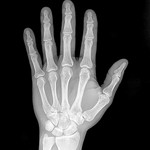
Credits: tracemeek
Phenomena and Theories of Human Computer Interaction
NUS SoC, 2012/2013, Semester I HCI Design Studio (COM1 2-02) / Tuesdays 10:00-12:00
Project » Pitch
When all is said and done, more is said than done. Lou Holtz
In Week 3, each mini-team will need to come up with a short 1-minute pitch. These will be videotaped, just to assist Min's grading. They will not be made public. You will be judged on both the idea and its presentation, in terms of its interestingness, relevance, recency. Don't try to find a well-defined, codified definition of what the above means -- after all theories and observations about phenomena are all models, and all models are wrong but some more usefully wrong than others.
Each team may present 1 slide (optional) to assist in their pitch. All students in class will vote on the top three mini-team pitches using whatever HCI-motivated criterion they wish; the mini-teams with top three counts of votes will be given a small prize.
You may want to refer to Prof. Zhao Shengdong's past CS 4201 project pitch assignment for tips about how to do your elevator pitch.
More detail. You'll need to do a 1-minute pitch in front of the class. Like entrepreneur's "elevator talk", your pitch's aim is to convince the audience (Min and your fellow peers) that your pitch is relevant, recent and interesting. Your project has to design something for someone, and can take the form of a website, software or embedding computing device (must be related to computing, since this is an HCI course).
In your pitch, you should state at least:
- "Someone" who you are designing for - what's your target audience?
- what tasks or goals that they are trying to achieve with your project's outcome. This is the action.
- "Something" what the form of the project will take - as a website, a tangible product, mobile software, mobile app, game, etc.
As the criteria are interestingness, relevance, and recency, it's also good if you can convincingly convey how your project idea stands out on these criteria.
- Interestingness - is it a new idea? Does it address a task and audience that is not usually considered? Does it take an old concept and propose to change it around (e.g., "flip" the classroom)
- Relevance - This one can be interpreted in several ways. You can argue how you want to interpret it by means of your pitch. How is the project personally interesting and relevant to your team? How is it relevant to this course (in terms of theories, phenemona, and HCI research and evaluation)?
- Recency - is it an idea that is enabled by new technology (e.g., Kinect, social networks) or address recent issues of public awareness
You can pitch factually, by just listing the things mentioned. But if you want to be more creative, it can be potentially more interesting and fun. You can try coming up with a short skit to illustrate the problem and product. If you choose this approach, you can choose to use super lo-fi props (e.g., a sheet of paper labeled as "our product") or a line drawing on the whiteboard (sketch of a TV, or a computer, for example) to aid in your skit.
Here's the current form of the procedure for the session. It'll be at least the first part of hour of class.
- I will announce the order in which the mini-groups are going to present on IVLE by Friday.
- Each group will have approximately 30 seconds to set up. E.g., switch laptops to put up your optional slide, draw on the whiteboard.
- You will have to announce your project pitch title, so that your peers can recall what it is about.
- You will give your 1 minute pitch. It will be timed by Min. You must stop after 1 minute, or get cut off.
- There will be up to 1 minute for clarifications about your project pitch. These can be quick questions asked by your peers or by Min, to clarify your idea or some aspect of it.
- Your peers will score your pitch on their voting slips (to be provided by me at the beginning of class).
- I will be capturing the video from his laptop. I will give you your grades for the pitch according the the criteria within 2 weeks (but hopefully much sooner so that you can use these for your actual project ideas).
Tips:
- A minute isn't a lot of time and since we have a lot of mini-groups (25 at current standing), it will go very, very fast. Do practice. As a fallback, prepare a script or index cards to say in front of class. You may find it helpful to visit that HCI Design Studio (our classroom) and practice in place.
- Don't stress out about this. Epic fails (they do occur) will be followed up by Min to get the factual details of your pitch. The pitch is to give you some practice giving oral presentations.
- Relaxing before pitching is a great idea. Eat breakfast and turn up early to class. Empty your bladder :-)
- But practice before you relax. A minute can be a long time or a short time depending on your practicing. You need to be familiar with your material before you can give it reliably in 1 minute.